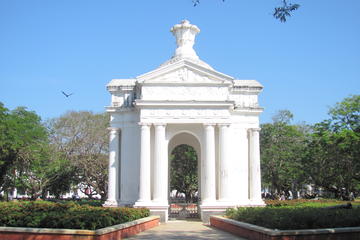
Treasures of a Bygone Empire
by Susmita Sengupta
 The city of Agra in North India is synonymous with the Taj Mahal, the apogee of Mughal architecture in India. The Mughal Empire was founded by Babur in 1526, a descendent of Timur (Tamerlane) and Genghis Khan. Babur reigned from 1526-1530. He was succeeded by his son Humayun. But the Mughal Dynasty truly flourished under the rule of the emperors who followed Humayun, his son Akbar (1556-1605), Akbar’s son Jahangir (1605-1627), and Akbar’s grandson Shah Jahan (1628-1658), known as the builder of the Taj Mahal.
The city of Agra in North India is synonymous with the Taj Mahal, the apogee of Mughal architecture in India. The Mughal Empire was founded by Babur in 1526, a descendent of Timur (Tamerlane) and Genghis Khan. Babur reigned from 1526-1530. He was succeeded by his son Humayun. But the Mughal Dynasty truly flourished under the rule of the emperors who followed Humayun, his son Akbar (1556-1605), Akbar’s son Jahangir (1605-1627), and Akbar’s grandson Shah Jahan (1628-1658), known as the builder of the Taj Mahal.
On a recent trip to New Delhi, we decided to visit this wonder of the world. I had visited the Taj once before years ago and now I wanted my daughter to experience it. But there was also a slip up on the earlier trip that I wanted to rectify. Along with the Taj Mahal, Agra also has two other marvelous specimens of Mughal architecture which I missed visiting on that earlier trip. They are the Agra Fort and Sikandra, two shining examples of Mughal legacy.
 On a hot, summer day in August, with temperatures reaching 100F, we traveled to Agra from New Delhi in a rented car with driver. This is one of the best ways to go to Agra in the hot months as taxis such as these are air conditioned and one can travel in relative comfort. Our first stop was at Sikandra, the mausoleum of Emperor Akbar, about 10 kilometers from Agra city center. Considered as the greatest Mughal emperor, he was the most secular minded royalty and a patron of the arts, literature, philosophy and science. Akbar himself laid out the plans for his own tomb, selected an appropriate site and even started building it. His son Emperor Jahangir finished building the tomb in 1613.
On a hot, summer day in August, with temperatures reaching 100F, we traveled to Agra from New Delhi in a rented car with driver. This is one of the best ways to go to Agra in the hot months as taxis such as these are air conditioned and one can travel in relative comfort. Our first stop was at Sikandra, the mausoleum of Emperor Akbar, about 10 kilometers from Agra city center. Considered as the greatest Mughal emperor, he was the most secular minded royalty and a patron of the arts, literature, philosophy and science. Akbar himself laid out the plans for his own tomb, selected an appropriate site and even started building it. His son Emperor Jahangir finished building the tomb in 1613.
 The hallmark of Mughal architecture in India is in the use of red sandstone and marble. We entered the mausoleum complex through a red sandstone gateway, with four minarets in each corner, immediately bringing to mind the Taj Mahal. There are four gateways into the complex but only one is in use now. A broad, paved plaza like walkway leads to the tomb. Magnificent in its look, the tomb is a five story red sandstone building, carved with glazed tiles and colorful stones. The eye catching mosaic patterns that cover the gateway and the tomb entrance embody the essence of Mughal design showcasing elaborate stone inlay work, calligraphy, tile work, painted stucco and white marble.
The hallmark of Mughal architecture in India is in the use of red sandstone and marble. We entered the mausoleum complex through a red sandstone gateway, with four minarets in each corner, immediately bringing to mind the Taj Mahal. There are four gateways into the complex but only one is in use now. A broad, paved plaza like walkway leads to the tomb. Magnificent in its look, the tomb is a five story red sandstone building, carved with glazed tiles and colorful stones. The eye catching mosaic patterns that cover the gateway and the tomb entrance embody the essence of Mughal design showcasing elaborate stone inlay work, calligraphy, tile work, painted stucco and white marble.
The tomb is situated in the midst of a four square garden, also called char-bagh, the epitome of Mughal style. The beauty of the complex took our minds away from the searing heat as we marveled at the intricate patterns and made our way to the crypt to see Akbar’s final resting place. Once back outside, the sun was setting and brought in a breeze, cooling us down. We walked around the plaza stopping by to watch a flock of deer and peacocks in the garden. And then it was time to travel onwards to Agra. Our driver suggested that we visit Taj at sunrise in order to avoid the heat.
 At around 7 am next morning, we reached the Taj Mahal. In the early morning quiet, we had an easy time of buying tickets and then we headed towards the main entrance gateway to the Taj. I could feel the palpable excitement in the air as we waited to get in. One first views the Taj through the dark entrance way and I remembered my first visit all those years ago. The Taj is one monument I feel that exceeds the expectations of the viewer no matter how many times they have seen it.
At around 7 am next morning, we reached the Taj Mahal. In the early morning quiet, we had an easy time of buying tickets and then we headed towards the main entrance gateway to the Taj. I could feel the palpable excitement in the air as we waited to get in. One first views the Taj through the dark entrance way and I remembered my first visit all those years ago. The Taj is one monument I feel that exceeds the expectations of the viewer no matter how many times they have seen it.
Here’s a little bit more background about the Taj Mahal. It was built by Emperor Shah Jahan as a symbol of love for his third wife Mumtaz Mahal who died in childbirth in 1631 while giving birth to their 14th child. Shah Jahan was the most prolific builder amongst all the Mughal emperors. He is credited with the construction of the Red Fort and Jama Masjid in New Delhi, the Moti Masjid (Pearl mosque), Sheesh Mahal and Naulakha Pavilion in Lahore Fort in Pakistan. But his crowning achievement is definitely the Taj Mahal.
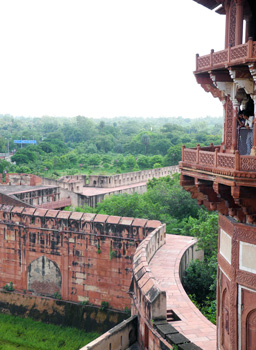 The tomb complex stands on the southern banks of the River Yamuna and took twenty years to be completed. It is made of white marble inlaid with semi-precious stones that form intricate designs using the pietra dura technique. There are verses from the Quran, inscribed in calligraphy on various sections of the complex including its arched entrances. Like at Sikandra, the Taj too is situated in a four square Mughal paradise garden, on its northernmost end and on a raised marble platform. The four decorative minarets on each corner lean away slightly so that in the event of an earthquake they do not fall on the main structure. Both Shah Jahan and Mumtaz Mahal are interred here and we see their highly decorated marble cenotaphs directly below the main dome. Both these are false tombs and the real tombs are underground and cannot be viewed by the public.
The tomb complex stands on the southern banks of the River Yamuna and took twenty years to be completed. It is made of white marble inlaid with semi-precious stones that form intricate designs using the pietra dura technique. There are verses from the Quran, inscribed in calligraphy on various sections of the complex including its arched entrances. Like at Sikandra, the Taj too is situated in a four square Mughal paradise garden, on its northernmost end and on a raised marble platform. The four decorative minarets on each corner lean away slightly so that in the event of an earthquake they do not fall on the main structure. Both Shah Jahan and Mumtaz Mahal are interred here and we see their highly decorated marble cenotaphs directly below the main dome. Both these are false tombs and the real tombs are underground and cannot be viewed by the public.
It was now about nine am, and the Taj was shining, jewel like in the strong morning sun. The place was slowly filling up with visitors from all over the world. About three million people visit the Taj during the peak tourist season, making it one of the most visited historic sites in the world. It is also a UNESCO World Heritage Site, designated so in 1983. We spent some more time admiring the splendid reflection of the Taj in the mirror like water pools that divide the garden into four squares.
 Soon it was time to leave and move on to the next historic site on our itinerary, the Agra Fort, also known as the Red Fort of Agra. Emperor Akbar began building this massive red sandstone fort in 1565 and it was completed with further additions by Emperors Jahangir and Shah Jahan. Predominantly built as a military structure, Shah Jahan constructed several white marble palaces within the premises. It too is a UNESCO World Heritage Site designated so in the same year as the Taj.
Soon it was time to leave and move on to the next historic site on our itinerary, the Agra Fort, also known as the Red Fort of Agra. Emperor Akbar began building this massive red sandstone fort in 1565 and it was completed with further additions by Emperors Jahangir and Shah Jahan. Predominantly built as a military structure, Shah Jahan constructed several white marble palaces within the premises. It too is a UNESCO World Heritage Site designated so in the same year as the Taj.
Although the iconic Taj will always stay in prime focus, the Agra Fort is impressive of its own accord. It is a walled city, covering about 94 acres, with massive walls and four gigantic gates. Today we enter the fort through the South Gate or the Amar Singh Gate. We then pass through two more massive gates built by Akbar before reaching the fort proper. My first introduction to the Agra Fort was when I saw the 2007 Bollywood movie “Jodha – Akbar”, an epic love story that chronicled the romance of Emperor Akbar and his Hindu Rajput wife Jodha, the mother of Emperor Jahangir.
 We walked around the fort in the blinding August midday heat, strangely unperturbed, feeling ourselves being transported to the Mughal glory days. We strolled through marble pavilions and red sandstone hallways, stopping to admire the elaborate and intricate carvings. The Agra Fort is a superb example of Indo-Muslim architecture with Persian influences. This is seen in the floral and geometric designs that cover the walls, the archways, and in the intricate jali (perforated stone and latticed screens) patterns and the balconies that overlook the Yamuna River and the Taj Mahal. In the final years of his life, Shah Jahan and his daughter Jahanara Begum were imprisoned here in the tower known as Musamman Burj by his son Emperor Aurangzeb when he came to power in 1658. It is said that he spent his last days looking out at the mausoleum of his beloved Mumtaz Mahal.
We walked around the fort in the blinding August midday heat, strangely unperturbed, feeling ourselves being transported to the Mughal glory days. We strolled through marble pavilions and red sandstone hallways, stopping to admire the elaborate and intricate carvings. The Agra Fort is a superb example of Indo-Muslim architecture with Persian influences. This is seen in the floral and geometric designs that cover the walls, the archways, and in the intricate jali (perforated stone and latticed screens) patterns and the balconies that overlook the Yamuna River and the Taj Mahal. In the final years of his life, Shah Jahan and his daughter Jahanara Begum were imprisoned here in the tower known as Musamman Burj by his son Emperor Aurangzeb when he came to power in 1658. It is said that he spent his last days looking out at the mausoleum of his beloved Mumtaz Mahal.
No matter the season, Agra is truly a wonderful place to visit to soak in the art and culture of India’s Mughal past.
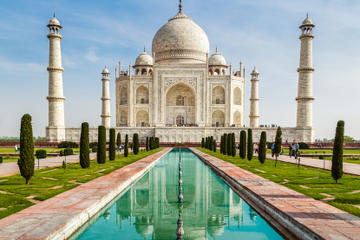
Private Tour: Day Trip to Agra from Delhi including Taj Mahal and Agra Fort
If You Go:
♦ Location: The city of Agra is located 204 km south of Delhi, the capital of India.
♦ The Agra Airport, barely 5 km from the city is linked to major cities across India by all the major domestic airlines. Agra is also well connected by railway. The luxury train, Palace on Wheels, and the super express trains, Rajdhani Express and Shatabdi Express, all stop here. The two main railway stations are Agra Fort Railway Station and Agra Cantonment Railway Station. The city is also very well connected by road to all major nearby destinations by government as well as private buses, taxis and cabs.
♦ The best time to visit Agra is from the months of March to October. Although the tourist areas are fine to visit anytime, winters are chilly and summers are scorching hot.
About the author:
Susmita Sengupta is a freelance writer who loves to travel. She and her family have traveled to various parts of the USA, Canada, Europe, the Caribbean, Middle East and India. She resides in New York City with her family.
Photos 2-8 by Susmita Sengupta:
Early morning view of Taj Mahal above the cityscape
Sikandra, tomb of Akbar
Gateway to Sikandra
The Taj Mahal
East ramparts of the Agra Fort
Arched pavilion of Diwan-e-Aam (hall of public audience)
Intricate carvings in red sandstone at the fort


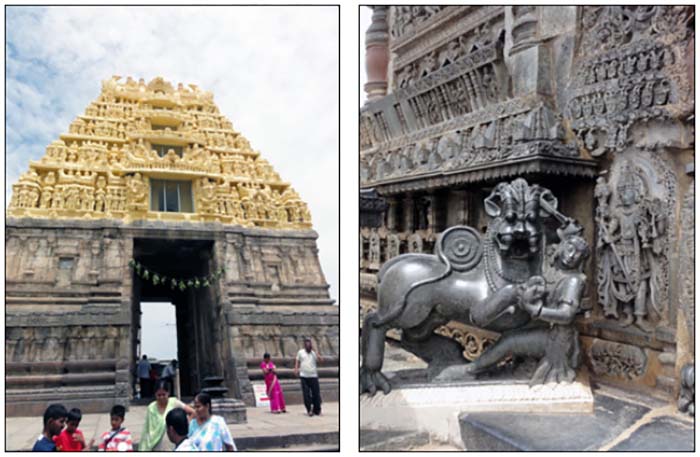
 While closer to Chikmagalur, we decided to take a quick detour to visit the renowned temples of Halebid and Belur, both located about 30 km (though in different directions) from Chikmagalur. Both these temples are characterized by ornate pillars, detailed panels, intricate carvings, beautiful sculptures and are the finest examples of the Hoysala school of architecture. The Hoysaleswara temple in Halebid, dating back to the 12th century has it walls covered with myriad sculptures which depict a wide variety of Hindu Gods, mythological birds and animals. It is indeed a marvel that no two sculptures here are the same.
While closer to Chikmagalur, we decided to take a quick detour to visit the renowned temples of Halebid and Belur, both located about 30 km (though in different directions) from Chikmagalur. Both these temples are characterized by ornate pillars, detailed panels, intricate carvings, beautiful sculptures and are the finest examples of the Hoysala school of architecture. The Hoysaleswara temple in Halebid, dating back to the 12th century has it walls covered with myriad sculptures which depict a wide variety of Hindu Gods, mythological birds and animals. It is indeed a marvel that no two sculptures here are the same.
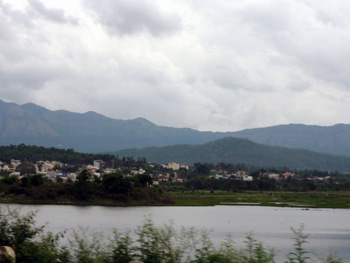 One of the most popular attractions in Chikmagalur is the peak of Mullayyanagiri. This is the highest peak in Karnataka and at a little less than 2000 meters, it is one of the most loved trekking destinations. However, the road to Mullayyanagiri is very narrow with steep curves. Unless traveling on a clear sunny day, there is every chance that the road ahead would be very foggy with very low visibility. The road ends a little below the peak beyond which a small trek takes you to the peak which houses a temple. The views are picturesque and breathtaking and provide a great spectacle of the Arabian Sea on clear days.
One of the most popular attractions in Chikmagalur is the peak of Mullayyanagiri. This is the highest peak in Karnataka and at a little less than 2000 meters, it is one of the most loved trekking destinations. However, the road to Mullayyanagiri is very narrow with steep curves. Unless traveling on a clear sunny day, there is every chance that the road ahead would be very foggy with very low visibility. The road ends a little below the peak beyond which a small trek takes you to the peak which houses a temple. The views are picturesque and breathtaking and provide a great spectacle of the Arabian Sea on clear days.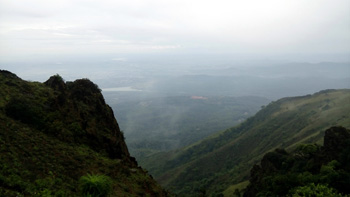 Close to Bababudan giri are the Manikyadhara Falls which again is a much visited destination. Though small, the waterfalls are frequented throughout the year as it is considered a holy site. Tourists as well as locals bathe in the water as it is believed to have divine therapeutic powers. We too had a quick dip in the waters before proceeding back.
Close to Bababudan giri are the Manikyadhara Falls which again is a much visited destination. Though small, the waterfalls are frequented throughout the year as it is considered a holy site. Tourists as well as locals bathe in the water as it is believed to have divine therapeutic powers. We too had a quick dip in the waters before proceeding back.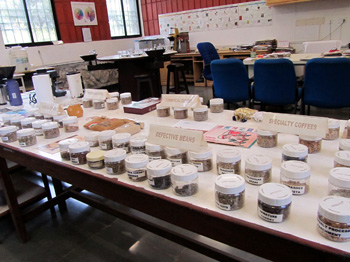 In the city, the coffee museum is yet another ‘must visit’. Nestled in the greenery of the ‘coffee land’, this place is a store house of information on the history of coffee, its cultivation, varieties, grading and basically everything you ever wanted to know about coffee. An initiative by the Coffee Board of India, the museum also houses the coffee quality evaluation and training center. Attractive visuals and maps display interesting trivia and the place gives you a complete picture of the “bean to brew” journey. With a modest entry fee, this place can really boost your knowledge on coffee and it is recommended for adults and children alike.
In the city, the coffee museum is yet another ‘must visit’. Nestled in the greenery of the ‘coffee land’, this place is a store house of information on the history of coffee, its cultivation, varieties, grading and basically everything you ever wanted to know about coffee. An initiative by the Coffee Board of India, the museum also houses the coffee quality evaluation and training center. Attractive visuals and maps display interesting trivia and the place gives you a complete picture of the “bean to brew” journey. With a modest entry fee, this place can really boost your knowledge on coffee and it is recommended for adults and children alike.

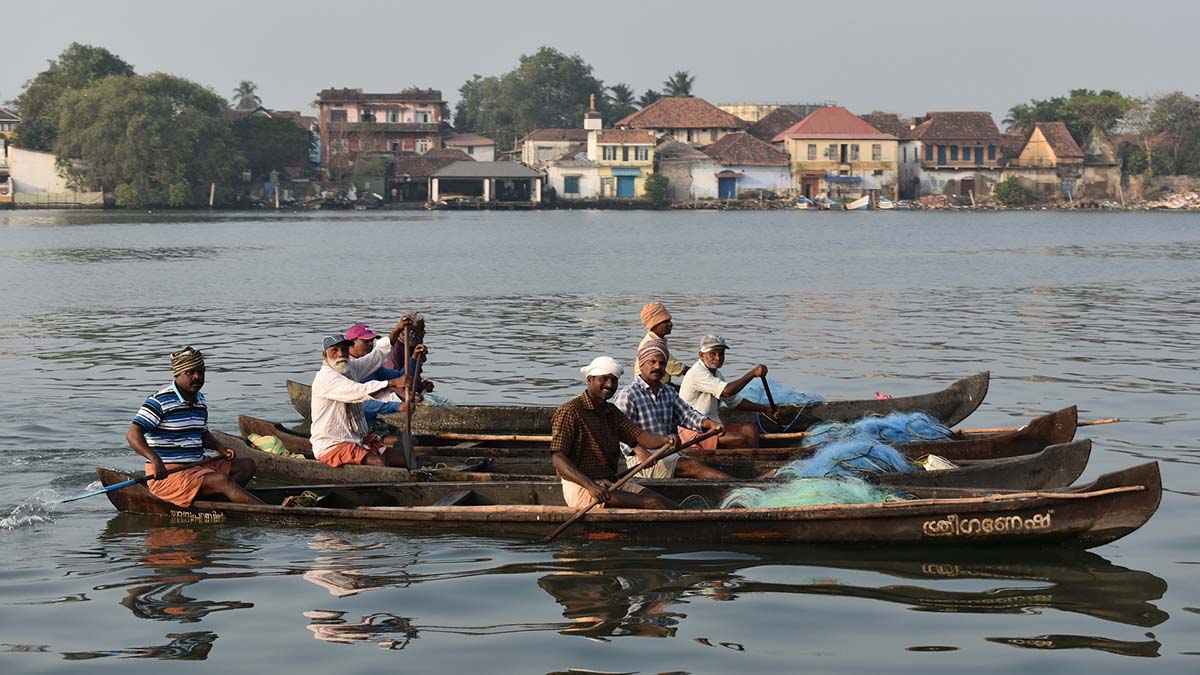
 One of the most popular attractions of Kochi is a cruise along the backwaters of one of India’s largest lakes, the Vembanad lake. A boat ride along the placid backwaters gives you an excellent opportunity to witness the varied sights of this wonderful port city. You can opt for a short cruise cruise that will literally give you a bird’s eye view of the city’s skyline including the islands of Willingdon and Vypeen. Some cruises even take you upto the estuary point, the point where you can witness the mouth of the massive Arabian sea.
One of the most popular attractions of Kochi is a cruise along the backwaters of one of India’s largest lakes, the Vembanad lake. A boat ride along the placid backwaters gives you an excellent opportunity to witness the varied sights of this wonderful port city. You can opt for a short cruise cruise that will literally give you a bird’s eye view of the city’s skyline including the islands of Willingdon and Vypeen. Some cruises even take you upto the estuary point, the point where you can witness the mouth of the massive Arabian sea. Arguably, one of the most engrossing sights of Kochi is the area of Fort Kochi which is the historical part of the town which has distinct European influences. Best explored on foot, this is the first European township in India and characterized by heritage bungalows, churches and of course the famous Chinese fishing nets. Definitely Kochi’s most recognizable sight, the fishing nets are a truly a mechanical wonder in that they have been around since the 14th century and are effectively used even today! It is worth watching a live demo of how these wonderful structures that are fixed installations work. About 10 meters in height, these nets are held by bamboo and teak poles and are operated in an unusual manner from the shore. The nets spread as much as 20 meters into the water and are laid for a short duration of about five minutes. It is indeed a unique experience and eager fishermen can give you a detailed account of these nets for a small fee; it is something not be missed while in the city!
Arguably, one of the most engrossing sights of Kochi is the area of Fort Kochi which is the historical part of the town which has distinct European influences. Best explored on foot, this is the first European township in India and characterized by heritage bungalows, churches and of course the famous Chinese fishing nets. Definitely Kochi’s most recognizable sight, the fishing nets are a truly a mechanical wonder in that they have been around since the 14th century and are effectively used even today! It is worth watching a live demo of how these wonderful structures that are fixed installations work. About 10 meters in height, these nets are held by bamboo and teak poles and are operated in an unusual manner from the shore. The nets spread as much as 20 meters into the water and are laid for a short duration of about five minutes. It is indeed a unique experience and eager fishermen can give you a detailed account of these nets for a small fee; it is something not be missed while in the city!
 A truly captivating area, the ancient and historical township of Jew Town is the centre of spices and antiques. Again teeming with little outlets, you can pick up anything from nutmeg, mace, cloves and cinnamon that are stored in sacks outside the store. The plethora of antiques available in the Jew town is truly mind boggling. From a wide variety of copper and brass artifacts, you can shop for items like antique bells, lamps and even stone sculptures.
A truly captivating area, the ancient and historical township of Jew Town is the centre of spices and antiques. Again teeming with little outlets, you can pick up anything from nutmeg, mace, cloves and cinnamon that are stored in sacks outside the store. The plethora of antiques available in the Jew town is truly mind boggling. From a wide variety of copper and brass artifacts, you can shop for items like antique bells, lamps and even stone sculptures.
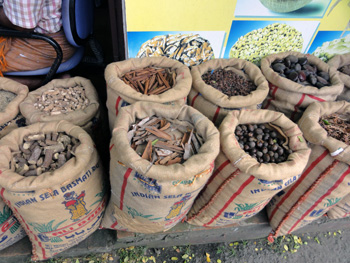 Yet another historical part of the city, Mattancherry is synonomous with the Dutch palace or the Mattancherry palace. Originally built by the Protuguese in 1555 as a gift for the Raja of Cochin, it was later renovated by the Dutch. A treasure house of information on the history of the city of Cochin and its rulers, this place has a remarkable collection of beautiful murals. Articles of use by the royals and portraits of the Rajas of Cochin right from 1864 are on display.
Yet another historical part of the city, Mattancherry is synonomous with the Dutch palace or the Mattancherry palace. Originally built by the Protuguese in 1555 as a gift for the Raja of Cochin, it was later renovated by the Dutch. A treasure house of information on the history of the city of Cochin and its rulers, this place has a remarkable collection of beautiful murals. Articles of use by the royals and portraits of the Rajas of Cochin right from 1864 are on display. While in the mainland city of Ernakulam, the Basilica of Our Lady of Ransom is a renowned centre of pilgrimage. This famous ancient Christian Church built in 1524 is visited by scores of people from not only Kerala but all over the world. Irrespective of caste, creed or religion, people throng here in great numbers to seek the blessings of Mary, the mother of Jesus, popularly known as “Vallarpadathamma” here. The annual festival of the church held each year in September is also very famous.
While in the mainland city of Ernakulam, the Basilica of Our Lady of Ransom is a renowned centre of pilgrimage. This famous ancient Christian Church built in 1524 is visited by scores of people from not only Kerala but all over the world. Irrespective of caste, creed or religion, people throng here in great numbers to seek the blessings of Mary, the mother of Jesus, popularly known as “Vallarpadathamma” here. The annual festival of the church held each year in September is also very famous.

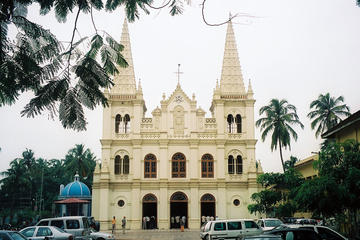
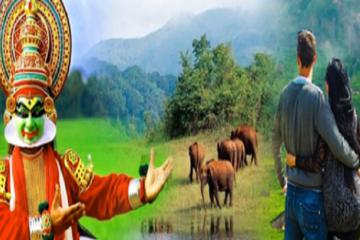
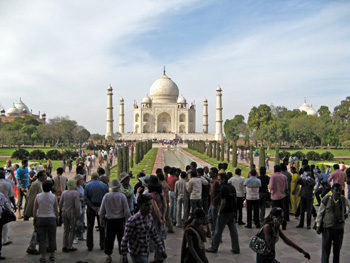
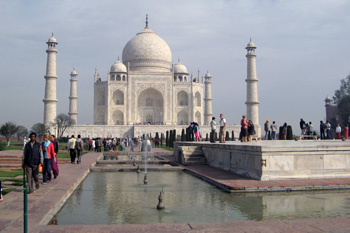 The mausoleum appears to be so far away, almost completely at the opposite end from where we stand admiring it from the southern gate. The complex on this side of the river occupies 42 acres. Regardless, the walk will be worth it.
The mausoleum appears to be so far away, almost completely at the opposite end from where we stand admiring it from the southern gate. The complex on this side of the river occupies 42 acres. Regardless, the walk will be worth it.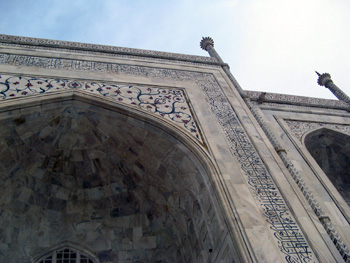 Arriving on the plinth, we can see that the mausoleum is 8-sided, but not a true octagon. Instead, the corners are chamfered to give four wide faces and four narrower corners of the building. All sides, though, incorporate vaulted archways. From here, we also have a much better view of the onion dome. Four more onion domes grace the chamfered corners. The ivory marble mausoleum sits on yet another raised platform. At the corners of this platform are 130 foot tall minarets. Our guide explains how these minarets are not quite straight. Instead, they are tilted slightly outward so they will fall away from the mausoleum if they collapse. This is a brilliant example of the detailed planning and engineering involved in constructing the Taj Mahal.
Arriving on the plinth, we can see that the mausoleum is 8-sided, but not a true octagon. Instead, the corners are chamfered to give four wide faces and four narrower corners of the building. All sides, though, incorporate vaulted archways. From here, we also have a much better view of the onion dome. Four more onion domes grace the chamfered corners. The ivory marble mausoleum sits on yet another raised platform. At the corners of this platform are 130 foot tall minarets. Our guide explains how these minarets are not quite straight. Instead, they are tilted slightly outward so they will fall away from the mausoleum if they collapse. This is a brilliant example of the detailed planning and engineering involved in constructing the Taj Mahal.
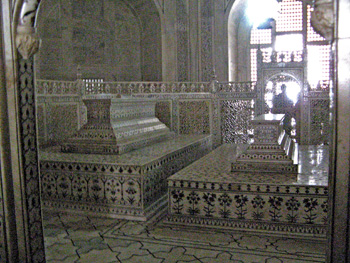 Finally standing on the raised platform, we can see the exquisite inlay of semi-precious stones in a twining vine and flower pattern above the immense archway of the entrance. Calligraphy of black marble inlay into white marble panels frames the archway as well. Our guide tells us how the calligraphy at the higher levels has been created in slightly larger script so that it appears to be the same height when viewing it from below. Again, the architects and artisans really show their skill in planning and executing this. About 20,000 artisans labored to create the mausoleum and plinth from 1632 to 1643. The rest of the complex took another decade to complete.
Finally standing on the raised platform, we can see the exquisite inlay of semi-precious stones in a twining vine and flower pattern above the immense archway of the entrance. Calligraphy of black marble inlay into white marble panels frames the archway as well. Our guide tells us how the calligraphy at the higher levels has been created in slightly larger script so that it appears to be the same height when viewing it from below. Again, the architects and artisans really show their skill in planning and executing this. About 20,000 artisans labored to create the mausoleum and plinth from 1632 to 1643. The rest of the complex took another decade to complete.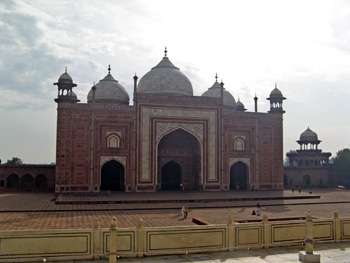 Looking beyond this screen, it’s startling to see the positioning of the sarcophagi. Everything else in this complex has been so painstakingly symmetrical, that it’s jarring to see the symmetry interrupted here. The tomb of Mumtaz Mahal had been placed in the center. Shortly after the completion of the Taj Mahal, one of Shah Jahan’s sons deposed and imprisoned him for the rest of his life. Surprisingly, this same son decreed Shah Jahan’s tomb to be added to the side without disturbing the original tomb. We discover later, however, that these are not the real sarcophagi. As per custom, the real ones are located in the same positions in the less elaborate lower level of the mausoleum and are inaccessible to visitors.
Looking beyond this screen, it’s startling to see the positioning of the sarcophagi. Everything else in this complex has been so painstakingly symmetrical, that it’s jarring to see the symmetry interrupted here. The tomb of Mumtaz Mahal had been placed in the center. Shortly after the completion of the Taj Mahal, one of Shah Jahan’s sons deposed and imprisoned him for the rest of his life. Surprisingly, this same son decreed Shah Jahan’s tomb to be added to the side without disturbing the original tomb. We discover later, however, that these are not the real sarcophagi. As per custom, the real ones are located in the same positions in the less elaborate lower level of the mausoleum and are inaccessible to visitors.
 We also venture to the back and finally discover the river that had been hidden from all the other vantage points. We find out later that another garden had been created on the opposite bank of the river in order to best view the mausoleum in the moonlight. Unfortunately, this garden on the other bank has fallen into disrepair.
We also venture to the back and finally discover the river that had been hidden from all the other vantage points. We find out later that another garden had been created on the opposite bank of the river in order to best view the mausoleum in the moonlight. Unfortunately, this garden on the other bank has fallen into disrepair.


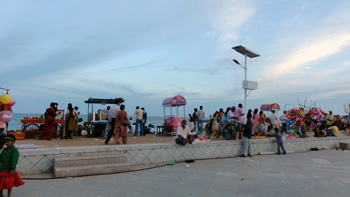 As it is a beach city, the Promenade is a hot spot for locals and tourists alike. About 1.5 km long this runs along Goubert Avenue (Beach road) and overlooks the Bay of Bengal. There are huge rocky boulders that prevent one from getting into the water but there are benches to sit and a fairly broad pavement where you can enjoy your morning and evening walks. Walking along the promenade you can see the statues of Mahatma Gandhi and Jawaharlal Nehru. About four meters tall and surrounded by 8 granite pillars, the Gandhi statue is a prominent figure on the beach front and is of special significance on National days. The French War memorial which is dedicated to the martyrs who laid down their lives during World War I is also along the Promenade. The old lighthouse that is one of the famous landmarks of Pondicherry can also be viewed from here. The place is full of life during the evenings especially on holidays and weekends with scores of hawkers selling street food, souvenirs, trinkets, junk jewellery and the like. The cafes and restaurants along the promenade are also great places to sit back, relax and watch the beautiful sunset.
As it is a beach city, the Promenade is a hot spot for locals and tourists alike. About 1.5 km long this runs along Goubert Avenue (Beach road) and overlooks the Bay of Bengal. There are huge rocky boulders that prevent one from getting into the water but there are benches to sit and a fairly broad pavement where you can enjoy your morning and evening walks. Walking along the promenade you can see the statues of Mahatma Gandhi and Jawaharlal Nehru. About four meters tall and surrounded by 8 granite pillars, the Gandhi statue is a prominent figure on the beach front and is of special significance on National days. The French War memorial which is dedicated to the martyrs who laid down their lives during World War I is also along the Promenade. The old lighthouse that is one of the famous landmarks of Pondicherry can also be viewed from here. The place is full of life during the evenings especially on holidays and weekends with scores of hawkers selling street food, souvenirs, trinkets, junk jewellery and the like. The cafes and restaurants along the promenade are also great places to sit back, relax and watch the beautiful sunset.
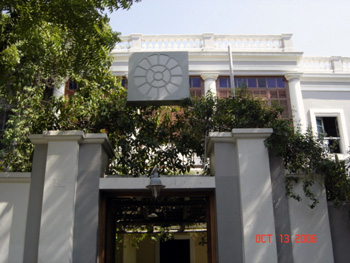 One of the key points of interest in Pondicherry is the Aurobindo Ashram which houses the tomb of Sri Aurobindo. He was a famous Indian nationalist, poet and yogi who joined the Indian movement for independence against the British rule. During his stay in Pondicherry he discovered a technique of spiritual practice called Integral Yoga and with the help of his spiritual collaborator, Mirra Alfassa (“The Mother”), he founded the Sri Aurobindo Ashram. The Ashram and its surroundings are serene and peaceful with a detail for cleanliness. The stone ‘sammadhi’ of Sri Aurobindo and The Mother are located in the central courtyard of the building which itself is set in a beautifully maintained colorful garden. There are several shops, guesthouses around the city that are run by the Ashram. You need to leave your footwear outside and children under the age of 3 are not allowed inside the premises.
One of the key points of interest in Pondicherry is the Aurobindo Ashram which houses the tomb of Sri Aurobindo. He was a famous Indian nationalist, poet and yogi who joined the Indian movement for independence against the British rule. During his stay in Pondicherry he discovered a technique of spiritual practice called Integral Yoga and with the help of his spiritual collaborator, Mirra Alfassa (“The Mother”), he founded the Sri Aurobindo Ashram. The Ashram and its surroundings are serene and peaceful with a detail for cleanliness. The stone ‘sammadhi’ of Sri Aurobindo and The Mother are located in the central courtyard of the building which itself is set in a beautifully maintained colorful garden. There are several shops, guesthouses around the city that are run by the Ashram. You need to leave your footwear outside and children under the age of 3 are not allowed inside the premises.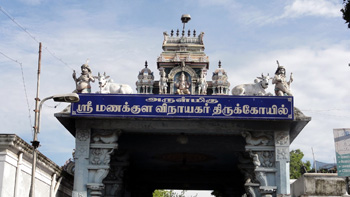 Located in the vicinity of the Ashram is the popular “Manakula Vinayagar Temple” which is a temple dedicated to the elephant God; Lord Ganesha. With beautiful carvings and an elaborate “gopuram” which is the exterior tower of a temple, this place also houses an elephant that is stationed outside the temple. Right in the middle of the old French town, this temple attracts scores of tourists and locals as the deity is considered very powerful. The market outside the temple is equally colorful with flowers, idols and articles of worship on display.
Located in the vicinity of the Ashram is the popular “Manakula Vinayagar Temple” which is a temple dedicated to the elephant God; Lord Ganesha. With beautiful carvings and an elaborate “gopuram” which is the exterior tower of a temple, this place also houses an elephant that is stationed outside the temple. Right in the middle of the old French town, this temple attracts scores of tourists and locals as the deity is considered very powerful. The market outside the temple is equally colorful with flowers, idols and articles of worship on display.
 A little away from the city at about 7 km, Chunnambar or Paradise beach is yet another haven for tourists. Accessible by ferry, this is located at point where the Chunnambar River backwaters meet the Bay of Bengal. The view of the pristine waters, sand and sun make this a great addition to the itinerary.
A little away from the city at about 7 km, Chunnambar or Paradise beach is yet another haven for tourists. Accessible by ferry, this is located at point where the Chunnambar River backwaters meet the Bay of Bengal. The view of the pristine waters, sand and sun make this a great addition to the itinerary. Auroville or the “city of dawn” is located about 8 km north west of Pondicherry and was founded by the Mother. Conceived as a universal town where men and women of various countries can live together in peace and harmony, this place has over 2000 people living and are involved in activities like agriculture, handicrafts, healthcare, administration etc. The central Matrimandir, which is not a temple but a place for individual silent meditation is stunning and set in an area of 62 acres in the centre of the township. The Auroville visitor center is a unique place to visit and one can spend at least half a day at the boutique stores and cafeteria within.
Auroville or the “city of dawn” is located about 8 km north west of Pondicherry and was founded by the Mother. Conceived as a universal town where men and women of various countries can live together in peace and harmony, this place has over 2000 people living and are involved in activities like agriculture, handicrafts, healthcare, administration etc. The central Matrimandir, which is not a temple but a place for individual silent meditation is stunning and set in an area of 62 acres in the centre of the township. The Auroville visitor center is a unique place to visit and one can spend at least half a day at the boutique stores and cafeteria within.